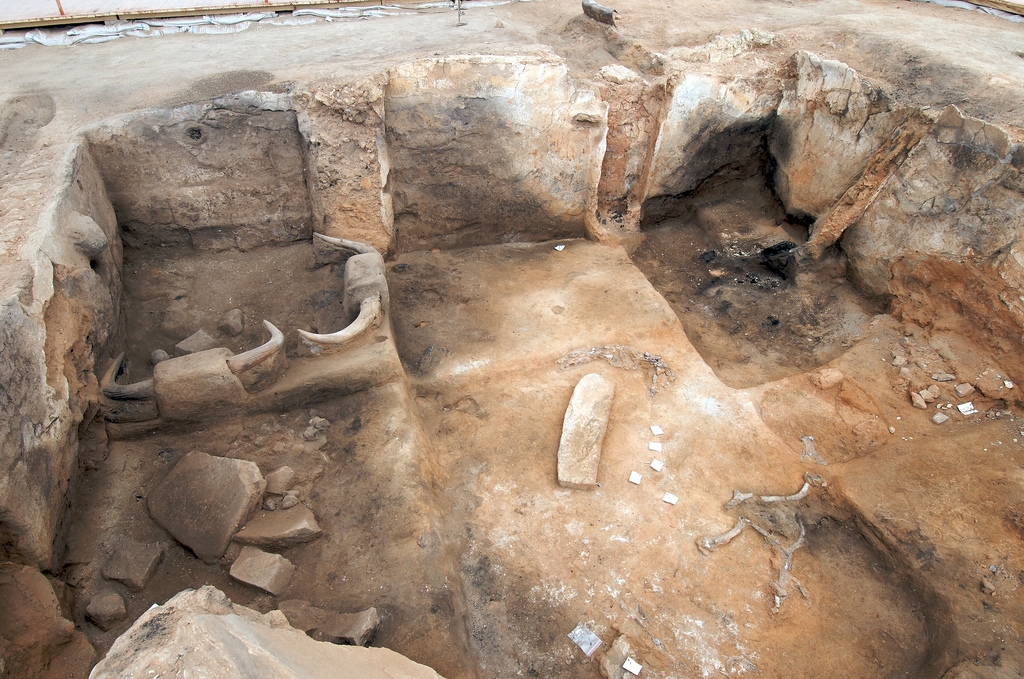Research project
Crafting networks in early farming societies
Tracing the residues of Neolithic activities through the study of stone artefacts
- Duration
- 2013 - 2015
- Funding
-
 European Commission, CORDIS
European Commission, CORDIS
Short abstract
Project CRAFTS investigates how technology draws people into social networks. The Neolithic period, a crucial phase in human history characterised by diverse technological and social changes, presents an excellent context to explore this issue. This project focuses on key Neolithic sites from the Central Anatolian (ca. 7400- 6000 BC) and the Aegean Neolithic (ca. 7000-3100 BC) that provide variation in terms of chronology, structuring conditions, environmental trajectories and social contexts.

Research question
This project investigates a key research question in the study of many different societies: how do changing strategies and technologies of production constrain and shape social relations?
Social relevance:
The project investigates the role of technology in the development of social networks in early farming societies through an interdisciplinary research strategy that integrates stone technology and microwear analysis with a wide range of other inorganic and organic materials (e.g. plants, animal bones, pottery, shells). Utilising different social units of analysis such as households, neighbourhoods, larger corporate groups, the project provides renewed understanding of the contexts of social interaction within different types of Neolithic settlements. More importantly, it allows us to address questions about the transmission of technological knowledge among different social groups and the creation of learning networks through the conduct of daily activities and habitually enacted practices.
Scientific relevance (for public)
The overall aim of the project is to understand the range, variation and social context of craft and food-processing activities in early farming communities.
The main research objectives of this project are:
- To establish the type of activities conducted within different types of Neolithic settlements.
- To investigate the spatial and temporal variability of these activities. Spatial analysis will examine the location (e.g. within households or in external spaces of communal character) and nature (domestic vs. specialised and/or communal control of production and consumption) of activities within settlement areas.
- To investigate cross-craft interactions in different Neolithic settlements in order to assess how the interactions afforded by technological processes may have contributed to the sharing of technological knowledge, toolkits, materials and techniques among different social groups, and in effect to the creation of learning networks.
Why Leiden University?
The Faculty of Archaeology at Leiden University has a long and successful tradition of research and teaching in microwear and residue analysis. The Laboratory for Material Culture Studies, directed by Prof. Annelou van Gijn, offers high quality laboratory space and equipment for the study of a wide range of materials. An exceptionally rich reference collection of experimentally manufactured and used implements is one of the main assets of the Laboratory.
Materials and methods
Three settlements from the Central Anatolian and the Aegean Neolithic, that date between ca. 7400 and 3100 BC, are chosen as case studies (Çatalhöyük, Knossos, Makriyalos). These sites provide variation in terms of chronology, structuring conditions, environmental trajectories and social contexts (short- vs. long-lived, island vs. mainland, flat extended sites vs. settlement mounds, monumental vs. ephemeral architecture). Thus they provide useful comparisons of different kinds of Neolithic societies.
The research objectives of Project CRAFTS are principally addressed through the application of microwear analysis on a wide range of ground stone implements. While most of the research on microwear traces on ground stone tools involves the use of binocular microscopes with relatively limited magnifications, this project takes advantage of the methodological advances made by Verbaas and van Gijn in the identification of distinct use wear polishes under higher magnifications. This suite of low- and high-power microscopy will allow a thorough investigation of the life history of stone tools and will provide invaluable insight in the nature of activities they were used for. The results of these types of analyses are integrated with the large corpus of bioarchaeological and artefactual data generated by multidisciplinary research on the study sites. This will result in a more informed understanding of the activities taking place in different Neolithic societies.
Following the microscopic analysis of objects close scrutiny is paid to the spatial patterning of these activities. This will enable us to depict how interactions were structured at different spatial scales such as the micro-scale (i.e. within households) and the meso-scale (between different households within a community/neighbourhoods).

